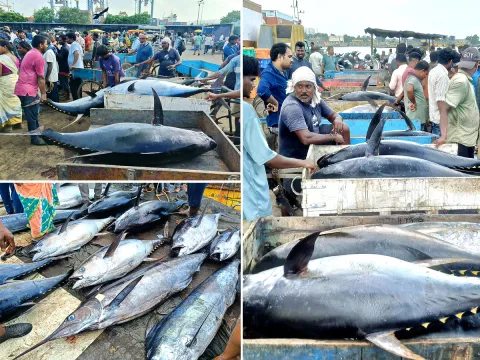
వాయువుల కైనెటిక్ సిద్ధాంతం రుజువు ..
The correct order of bond angles smallest first in H2S, NH3, BF3
P. Vijay Kishore
Senior faculty,Hyderabad
Chemical bonding & Gaseous State
1. The correct order of bond angles smallest first in H2S, NH3, BF3, and SiH4 is
a) H2S < SiH4 < NH3 < BF3
b) NH3 < H2S < SiH4 < BF3
c) H2S < NH3 < SiH4 < BF3
d) H2S < NH3 < BF3 < SiH4
2. The states of hybridisation of boron and oxygen atoms in boric acid (H3BO3) are
respectively
a) sp2 and sp2 b) sp2 and sp3
c) sp3 and sp2+ d) sp3 and sp3
3. Which one of the following has the regular tetrahedral structure?
a) SF4 b)
c) XeF4 d) [Ni(CN)4]2
4. The maximum number of 90° angles between bond pair-bond pair of electrons is observed in
a) sp3d2 hybridisation
b) sp3d hybridisation
c) dsp2 hybridisation
d) dsp3 hybridisation
5. The bond order in NO is 2.5 while that in NO+ is 3. Which of the following statements is true for these two species?
a) Bond length in NO+ is greater than in NO
b) Bond length in NO is greater than in NO+
c) Bond length in NO+ is equal to that in NO
d) Bond length is unpredictable
7. Lattice energy of an ionic compound depends upon
a) Charge on the ion only
b) Size of the ion only
c) Packing of ions only
d) Charge and size of the ions
10. A metal, M forms chlorides in its +2 and +4 oxidation states. Whi-ch of the following statements about these chlorides is correct ?
a) MCl2 is more volatile than MCl4
b) MCl2 is more soluble in anhydrous ethanol than MCl4
c) MCl2 is more ionic than MCl4
d) MCl2 is more easily hydrol ysed than MCl4
11. In which of the following molec-ules/ions all the bonds are not equal ?
a) SF4 b) SiF4
c) XeF4 d) BF4
12. The increasing order of the first ionization enthalpies of the elem-ents B, P S and F (lowest first) is
a) F < S < P < B
b) P < S < B < F
c) B < P < S < F
d) B < S <P < F
13. The decreasing values of bond angles from NH3(106°) to SbH3 (101°) down group-15 of the periodic table is due to
a) Increasing bp–bp repulsion
b) Increasing p–orbital character in sp3
c) Decreasing lp–bp repulsion
d) Decreasing electronegativity
16. Which of the following hydrogen bonds is the strongest ?
a) O – H …N b) F – H …F
c) O – H ….O d) O – H …F
17. The charge/size ratio of a cation determines its polarizing power. Which one of the following sequ-ences represents the increasing order of the polarising power of the cationic species, K+, Ca2+, Mg2+, Be2+
a) Mg2+ < Be2+ < K+ < Ca2+
b) Be2+ < K+ < Ca2+ < Mg2+
c) K+ < Ca2+ < Mg2+ < Be2+
d) Ca2+ < Mg2+ < Be2+ < K+
18. Which one of the following pairs of species have the same bond order?
a) CN– and NO+
b) CN– and CN+
c)
d) NO+ and CN+
21. Value of gas constant R is
a) 0.082 litre atm
b) 0.987 calmol–1K–1
c) 8.3 J mol–1 K–1
d) 83 erg mol–1 K–1
22. Kinetic theory of gases proves
a) Only Boyle's law
b) Only Charles' law
c) Only Avogadro's law
d) All of these
23. For an ideal gas, number of moles per litre in terms of its pressure P, as constant R and temperature T is
a) PT/R b) PRT
c) P/RT d) RT/P
24. According to the kinetic theory of gases, in an ideal gas between two successive collision a gas molecule travels
a) In a circular path
b) In a wavy path
c) In a straight line path
d) With an accelerated velocity
25. As the temperature is raised from 20°C to 40°C, the average kinetic energy of neon atoms changes by a factor of which of the following?
a) 1/2 b)
c) d) 2
26. In vander waals' equation of state of the gas law, the constant 'b' is a measure of
a) Intermolecular repulsions
b) Intermolecular attractions
c) Volume occupied by the molecules
d) Intermolecular collisions per unit volume
27. Which one of the following state-ments is not true about the effect of an increase in temperature on the distribution of molecular speeds in a gas?
a) The area under the distribut-ion curve remains the same as under the lower temperature
b) The distribution becomes broader
c) The fraction of the molecules with the most probable speed increases
d) The most probable speed increases
28. If 10–4 dm3 of water is introduc-ed into a 1.0 dm3 flask at 300 K, how many moles of water are in the vapour phase when equilibri-um is established?
(Given: Vapour pressure of H2O at 300 K is 3170 Pa; R = 8.314 JK–1 mol–1)
a) 1.27 × 10–3 mol
b) 5.56 × 10–3 mol
c) 1.53 × 10–2 mol
d) 4.46 × Q10–2 mol
29. 'a' and 'b' are vander Waals' constants for gases. Chlorine is more easily liquefied than ethane because
a) a and b for Cl2 < a and b for C2H6
b) a for Cl2 < a for C2H6 but b for Cl2 > b for C2H6
c) a for Cl2 > a for C2H6 but b for Cl2 < b for C2H6
d) a and b for Cl2 > a and b for C2H6
30. The compressibility factor for a real gas at high pressure is :
a) 1 + RT/pb b) 1
c) 1 + pb/RT d) 1–pb/RT
32. Arrange the vander Waals' constant for the gases
I) C6H6(g) A) 0.217
II) C6H5.CH3(g) B) 5.464
III) Ne(g) C) 18.000
IV) H2O(g) D) 24.060
a) I-A, II-D, III-C, IV-B
b) I-D, II-A, III-B, IV-C
c) I-C, II-D, III-A, IV-B
d) I-B, II-C, III-A, IV-D
33. X mL of H2 gas effuses through a hole in a container is 5 second. The time taken for the effusion of the same volume of the gas specified below under identical conditions is
a) 10 seconds : He
b) 20 seconds : O2
c) 25 seconds : CO
d) 55 seconds : CO2
34. The compressibility factor for an ideal gas is
a) 1.5 b) 1.0 c) 2.0 d) ¥
35. According to Graham's law, at a given temperature, the ratio of rates of diffusion rA/rB of gases A and B is given by
a) (PA/PB) (MA/MB)1/2
b) (MA/MB) (PA/PB)1/2
c) (PA/PB) (MB/MA)1/2
d) (MA/MB) (PB/PA)1/2
36. A gas will approach ideal behaviour at
a) Low temperature and low pressure
b) Low temperature and high pressure
c) High temperature and low pressure
d) High temperature and high pressure
37. The compressibility of a gas is less than unity at STP. Therefore:
a) Vm > 22.4 litre
b) Vm < 22.4 litre
c) Vm = 22.4 litre
d) Vm = 44.8 litre
38. The rms velocity of hydrogen is Ö7 times the rms velocity of nitrogen. If T is the temperature of the gas, then
a) T(H2) = T(N2)
b) T(H2) > T(N2)
c) T(H2) < T(N2)
d) T(H2) = Ö7 T(N2)
39. At 100°C and 1 atm, if the dens-ity of liquid water is 1.0 g cm–3 and that of water vapour is 0.0006 g cm–3, then the volume occupied by water molecules in 1 litre of steam at that temperature is
a) 6 cm3 b) 60 cm3
c) 0.6 cm3 d) 0.06 cm3
40. The root mean square speed of an ideal gas at constant pressure varies with density d as
a) d2 b) d
c) Öd d)
Key
1) c 2) b 3) b 4) a 5) b
6) b 7) d 8) c 9) a 10) c
11) a 12) d 13) d 14) a 15) b
16) b 17) c 18) a 19) b 20) a
21) c 22) d 23) c 24) c 25) c
26) c 27) c 28) a 29) c 30) c
31) b 32) c 33) b 34) b 35) c
36) c 37) b 38) c 39) c 40) d













